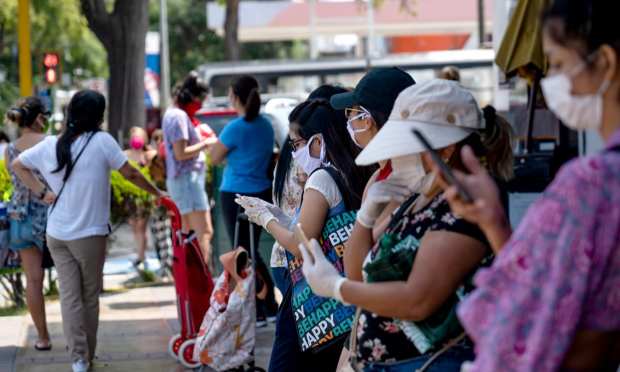Stellar’s Airtm Investment Seeds DeFI Opportunity In LatAm Markets

With Latin American eCommerce growing by 8.4 percent between 2019 and 2020 to over $200 billion, it’s safe to assume the need for safe, fast digital payments is — and will be — experiencing comparable growth.
According to Stellar Development Foundation CEO and Executive Director Denelle Dixon, the LatAm opportunity is very real, and as she told PYMNTS Karen Webster in a recent conversation, her firm’s recent $15 million investment into blockchain and bank-connected digital wallet and peer-to-peer exchange platform Airtm is not its first — or last — foray into the region.
“[Airtm] is very focused on that particular market and that user base,” Dixon said. “We really liked that they have a significant number of users that they’ve actually been able to grow in a peer-to-peer way. And they’re focusing on the areas that we really care about: these areas where people don’t have access to all of the tools that we take for granted.”
Dixon said Stellar and Airtm have been collaborating for the last several years, during which time she has been impressed by how mission-aligned the two firms are. It is not just in terms of their shared goal of enhancing the existing financial infrastructure needed to broaden access to financial services lacking in large swaths of the LatAm region.
Opening Access
Easy access to financial infrastructure, she noted, is very easy for first-world consumers to take for granted because they’ve been surrounded by it for their entire lives. Not having easy access to cash-in and cash-out points is unfamiliar to them, as are things like runaway currency devaluation due to inflation. It’s very hard to solve problems with no firsthand understanding of them, she said, and among her greatest frustrations working in payments tech has been the experience of sitting in Silicon Valley building “solutions” for people in regions where they didn’t live. And without the input of those local to the problems and issues being part of the construction process.
“I just feel like we can have them be part of the discussion and solving the problems and using technology to do it, but we don’t need to tell them what to do to do it,” Dixon explained. “We don’t actually know as well as they do.”
The Stellar Fund’s investment in Airtm, she said, is essentially putting the tools into the hands of local experts and allowing them to leverage them to the needs of the market they are in. She noted that the money Stellar is investing will go toward Airtm integrating into the Stellar platform, no small task that will itself involve bringing on additional engineers to fully enable it. From there, she said, they are going to use the funds to grow their platform via additional user acquisition. They will also be building out their blockchain infrastructure, “leveraging all of the underlying infrastructure of other companies and participants in the network” so that they can offer more services to their users.
“I think that the focal point for them is to make it so that everyone has access to this network of opportunity that they’ve created,” Dixon said. “And I think that’s a pretty remarkable thing to be able to do in Latin America.”
For Airtm, which is currently mostly focused on P2P payments, the ability to integrate with Stellar and all the other firms already in the Stellar Network creates opportunities to expand the platform’s power by diversifying its purpose over time. With its forthcoming ability to leverage, among other things, the USDC stablecoin (whose valuation is pegged directly to the U.S. dollar), there will also be a growing opportunity to leverage that stable asset — both as a hedge against the hyperinflation that plagues parts of the region, and also in terms of tapping it for the pay-in, pay-out functionality necessary for transacting more generally. With a stablecoin as strong as USDC, she said, it won’t be long before local vendors will want to leverage it as an opportunity to grow their user base and sell more goods and services.
But the most important and impressive outcomes of the tie-in between Stellar and Airtm, she said, aren’t known as of now because they haven’t yet been developed. The real power of these kinds of partnerships in historically underserved regions like Latin America, she said, are often seen not in the predicted improvements that come to the region but from the outside-of-the-box applications that locals come up with once the tools for innovations are placed into their hands. What is seen today from this tie-in will be impressive, she told Webster, but what innovators come up with tomorrow might well be the things that change the market as we know it — and Stellar is excited to be a part of that.
“When you put it in the hands of the regional players, and you say, what problems are you trying to solve? Here’s this technology that can help you solve it, and here’s this ecosystem around it that can help you build it. We don’t know what challenges they’re going to solve,” she said. “And that to me is the power of this technology and the power of building in the open and creating that transparency and those use cases and supporting them.”
